This weekend, our latest adventure was a very eventful trip to the French region of Alsace. If you’re not familiar the region, it’s in the northeast corner of France and borders both Germany and Switzerland. Also, if you are a fan of history, you probably know that this region has been fought over for centuries. It was conquered by the Roman Empire in the first century B.C. After the empire fell, a number of kingdoms rose. One dynasty you may have heard of were the Merovingians (this was also the name of the French omniscient character in the movie “The Matrix”). The golden age of Alsace was probably in the 12th and 13th centuries when cities and the merchant class flourished. During this time, the region bonded more and more with France. In 1648, the Treaty of Westphalia (which ended the Thirty Year’s War, and was nominally between Catholics and Protestants), most of the region was ceded to France. It remained that way for several centuries, however, the people who populated the region were often Germanic speaking and at least strongly influenced by Germany. So, after the Franco-Prussian War in 1870, when the Second Reich of Germany handed France a stunning defeat, the region of Alsace-Lorraine was given back to Germany. Prussia (or Germany) instituted a policy to destroy all vestiges of French influence by banning the French language and destroying French signs. But, yet again things changed, and after WWI and the Treaty of Versailles, the region was given autonomy. However, it couldn’t defend itself and France took control a week later. The saga continued when Hitler’s army swept around the Maginot Line (which went through the area) and annexed Alsace-Lorraine as part of Germany again in WWII. It wasn’t until after the war that the region was again French and stability
returned. Now, it is the seat of the European Parliament.
We started our tour in the large city of Strasbourg. Our first stop was the very impressive cathedral. It was designed in the late thirteenth century (but completed in the 15th) and is a massive, but delicate design. In fact, it was the tallest building in the world (after St. Olav’s Church in Estonia burned down in 1625) for 200 hundred years until 1847 when another church in Hamburg surpassed it. It’s still the fourth highest church in the world.
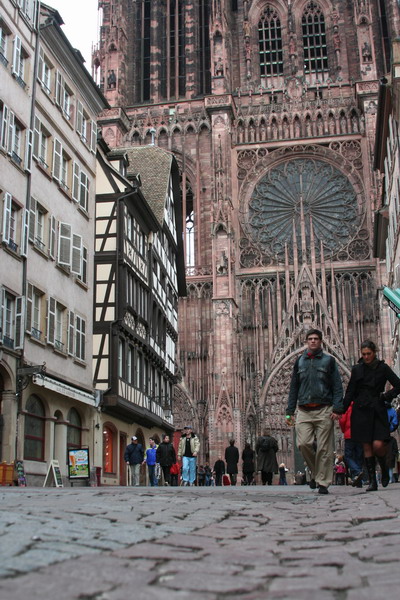
We also had the opportunity to climb the stairs to see the city from on high.
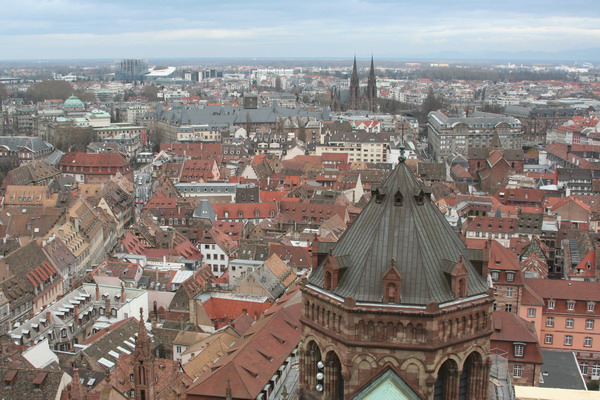

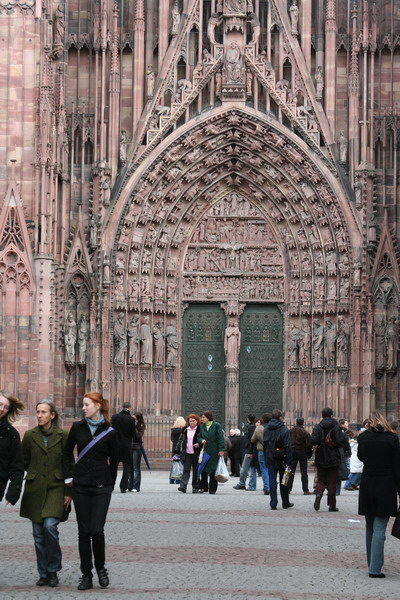
Inside, the Rose Window was amazing.
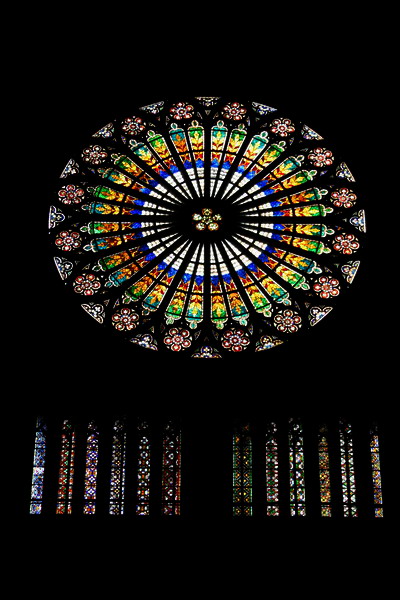
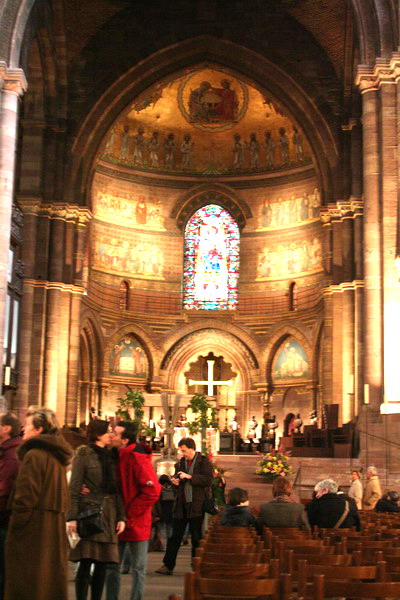
One of the highlights inside the church was this astronomical clock.
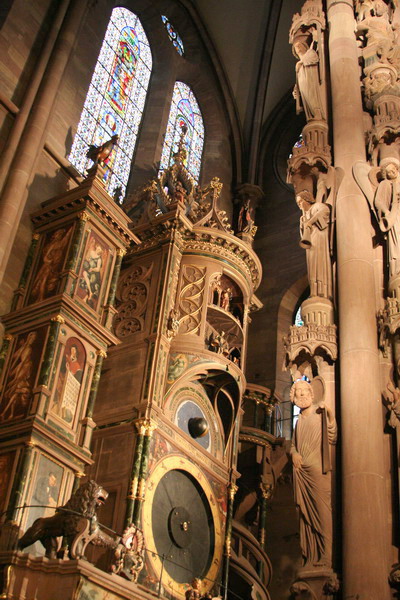
Every day the characters perform their parade at 12:30PM. It’s fascinating to see the different characters. You can tell which these are. Also, the clock was very advanced for its age and can determine when the Christian Easter is. For those who’ve wondered when Easter is, it’s the first Sunday after the 14th day of the lunar month after the vernal equinox (March 21st). Sounds complicated, huh?
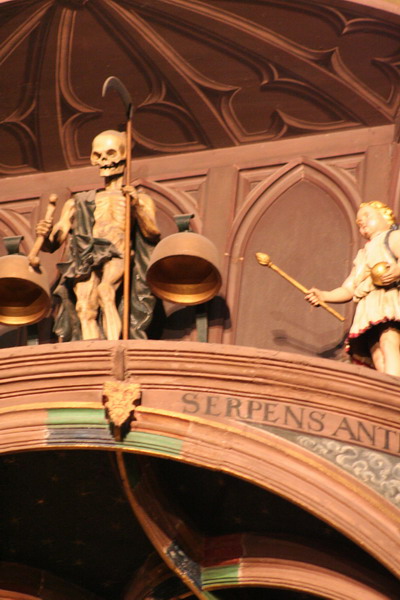
Next stop was in one of France’s most beautiful villages, Eguisheim. As you can see, we made the trip with our friends Jen and Andy. Our home for the night was a 200 year old bed and breakfast. The village was tiny, only about 1,500 people, but it was simply beautiful. Here are some images from our time there.
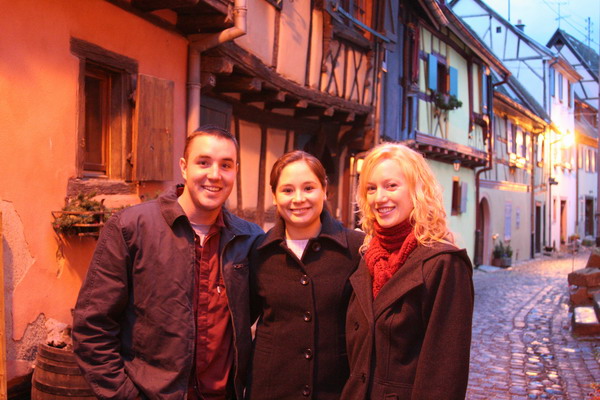
Here you can see a statue of Bruno of Eguisheim, who later became Pope Léon IX.
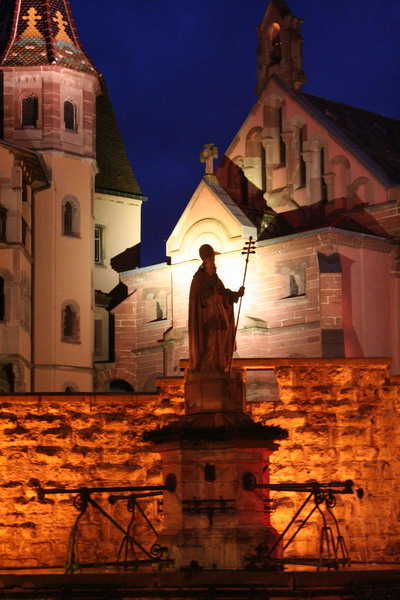
Ironically, this region is known as the sunniest (and least rainy) part of France.
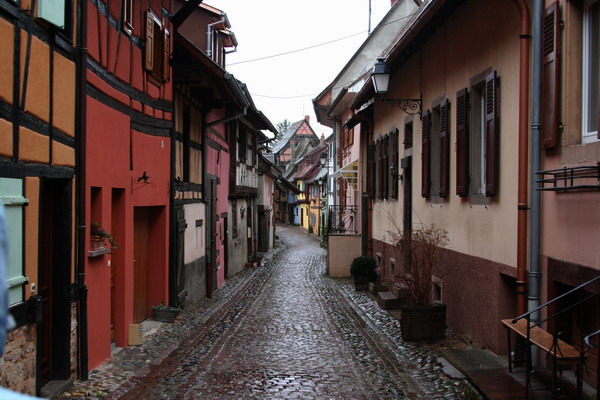
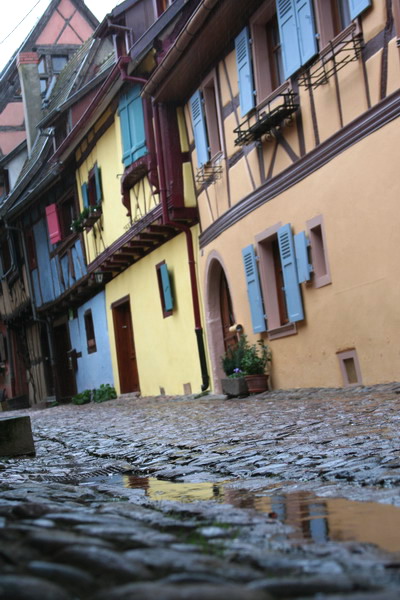
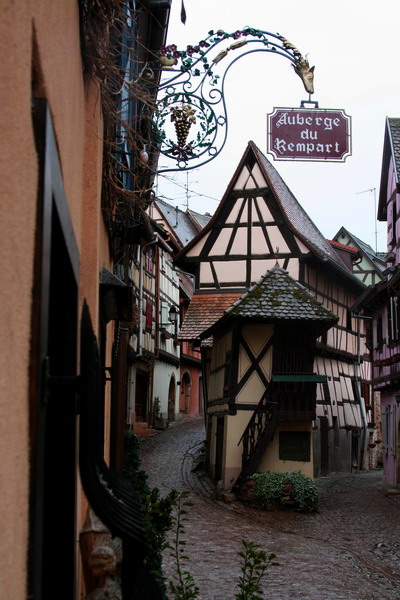
Here’s a nice picture of Jen and Andy.
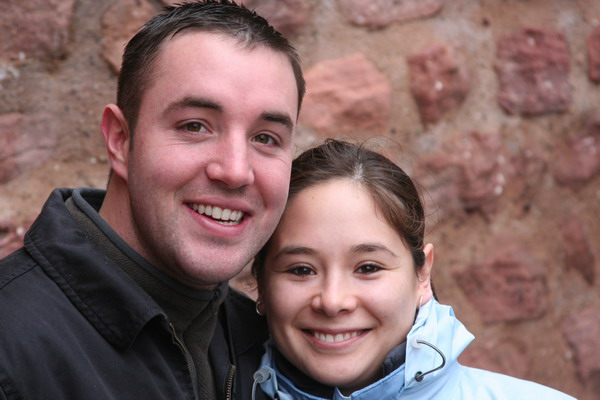
The mountains overlooking the Alsace Valley are the Vosages. Here, there are three castles or chateaus from the 11th and 12th centuries. They were destroyed many centuries ago, but are still quite spectacular. This was also Jen’s first castle experience.
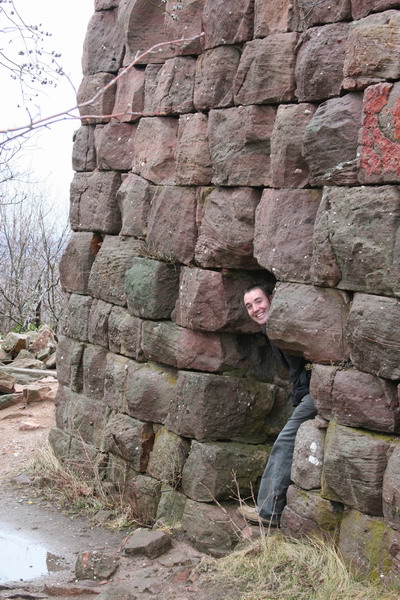
After playing in the ruins for a while, we noticed that were were close to the village of Munster. Of course, this is the namesake town for the cheese. However, this is NOT to be confused with American Muenster Cheese. The French version is quite aromatic. We liked it so much, that we had a whole meal of various types of cheese. It was delicious!
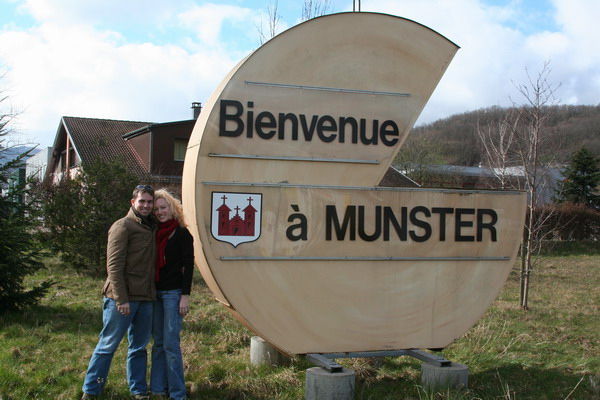
Another symbol of the region is the stork. While this species were nearly wiped out, local advocacy (on chimneys and rooftops) has permitted a resurgence.
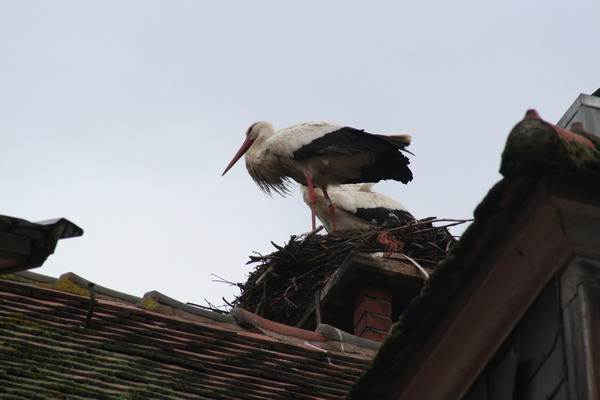
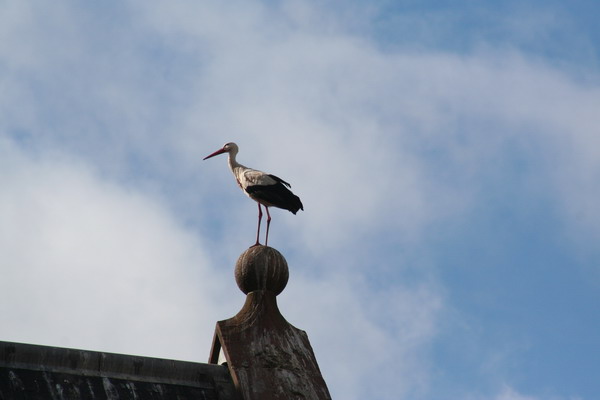
Next stop was one of the most famous tourist destinations in Alsace, the château du Haut-Kœnigsbourg. The German translation of the name is quite simply King’s Castle. This is a beautiful castle that was left to disrepair in 1648 again after the 30 Year’s War. That is, until the end of the 19th century when Kaiser Wilhelm II commissioned a Berlin architect to restore it. While it has been ridiculed for inaccurate restoration, it’s still impressive. The goal was to celebrate a medieval castle and its way of life. While the recreation may have been a bit romantic, it’s not entirely off base (and certainly awe inspiring).
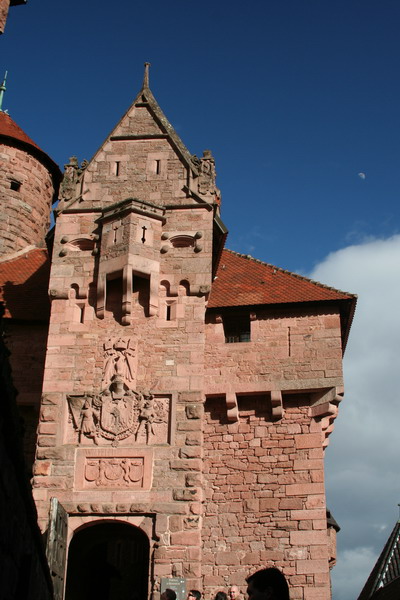
The moulin of the castle.
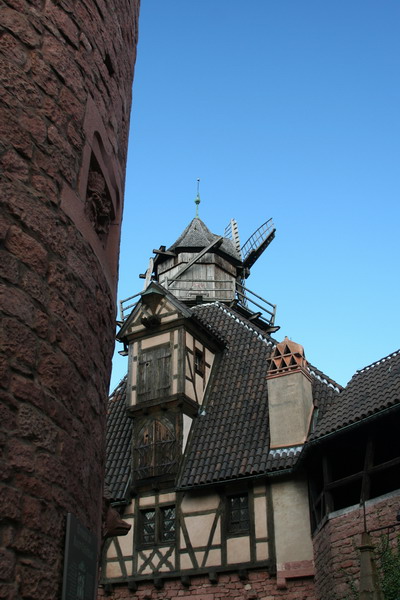
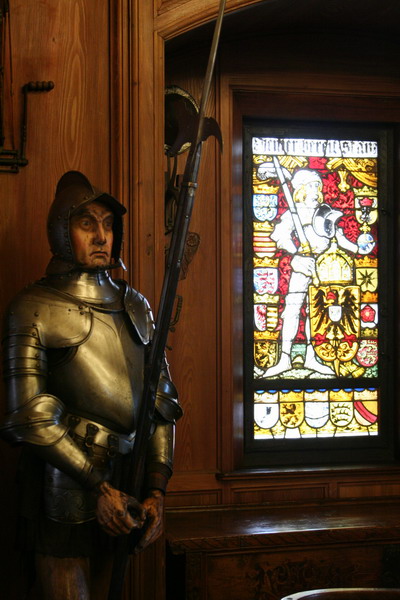
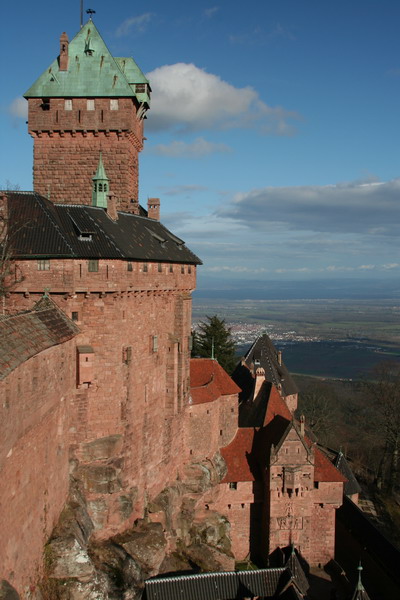
A typical castle ornament.
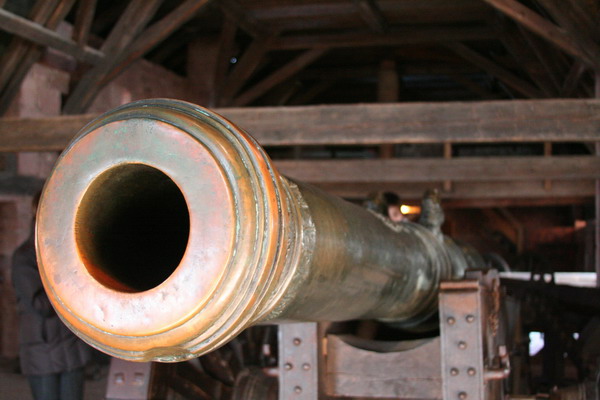
Hey, what’s down there??
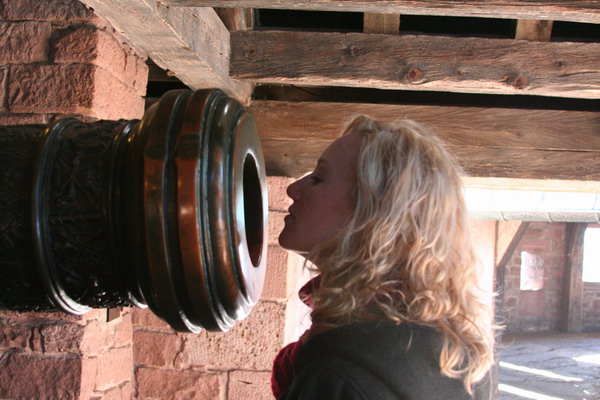
Andy capturing some nice images too.
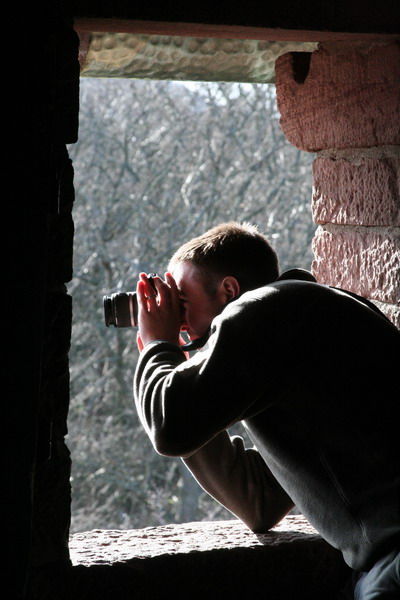
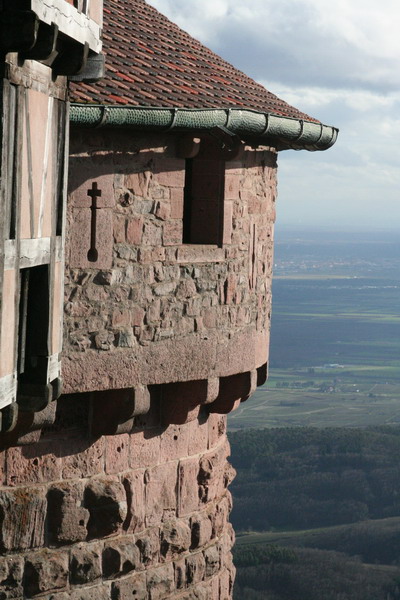
The final stop on our trip was back in the outskirts of Strasbourg. On our way down (Strasbourg is only a couple hours from our house), we found an advertisement for a chocolate museum. Since Anna is a choco-holic, we simply had to go. The presentation was nice and stepped visitors through the history and evolution of the cacao plant.
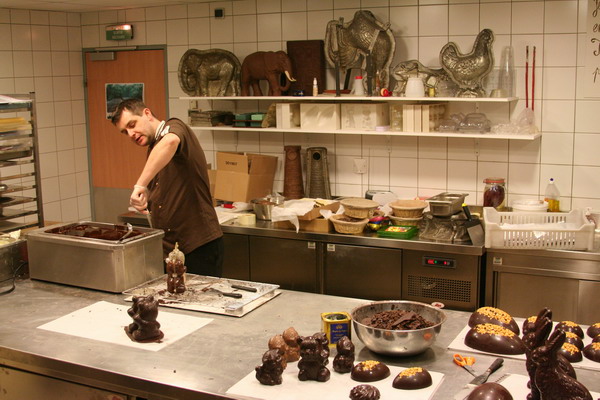
As you can see, they are gearing up for Easter.
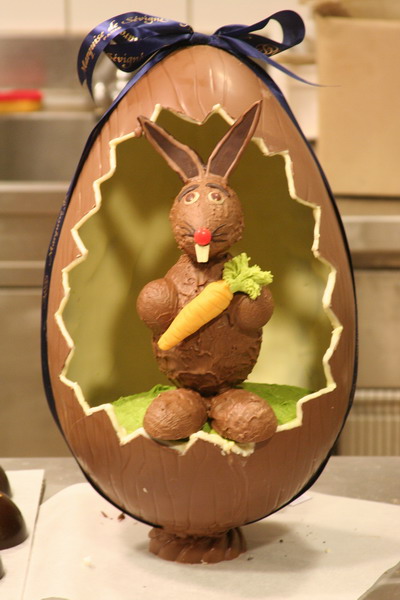
After the tour, we indulged in a little chocolate ourselves. We had four small cups of highly concentrated, semi-sweet hot chocolate. There were a variety of flavors you can add to it. My personal favorite was the orange (although my favorite combination remains chocolate and raspberry).
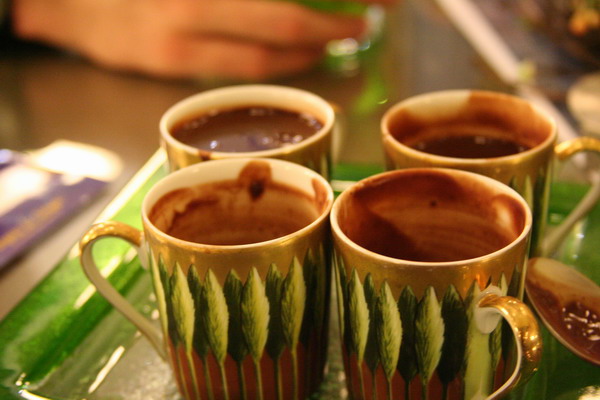
So, that concluded our phenomenal weekend with Jen and Andy. The Alsace region is even better in the summer, when flowers and grapes fill the valley. So, we’ll have to re-visit this region…
Until then.
–Jim
Skip to content
Our Family Story.
